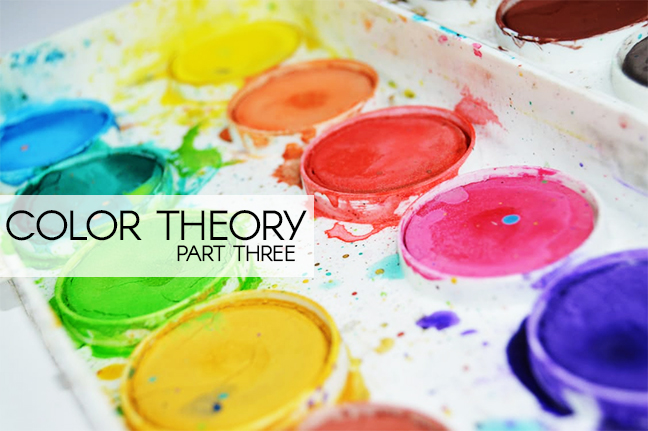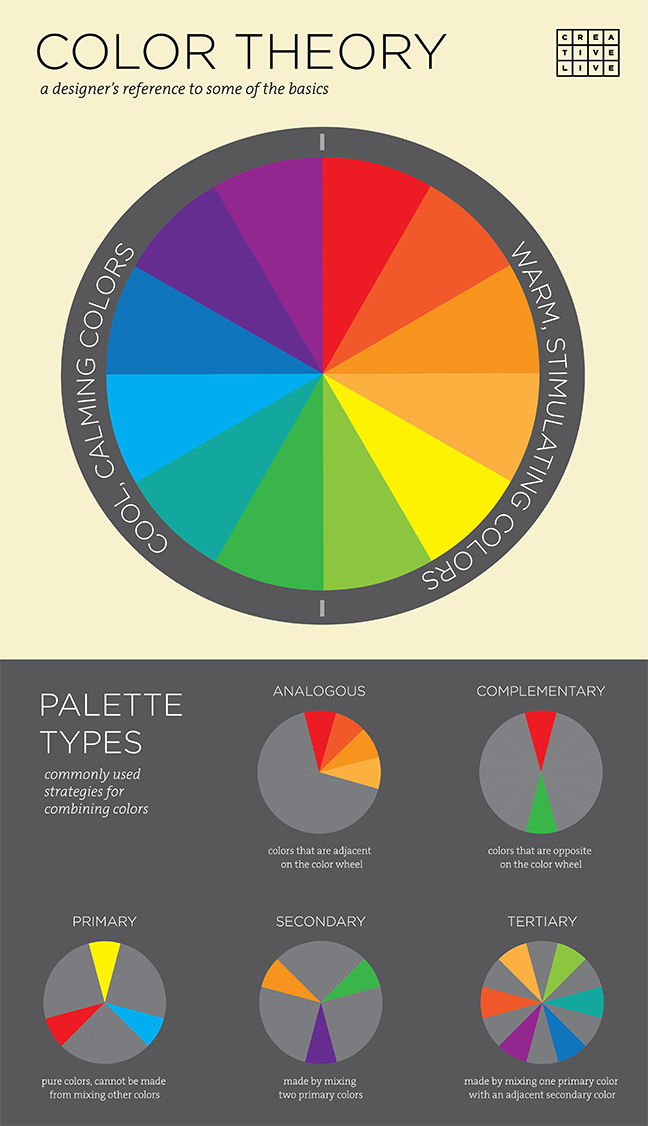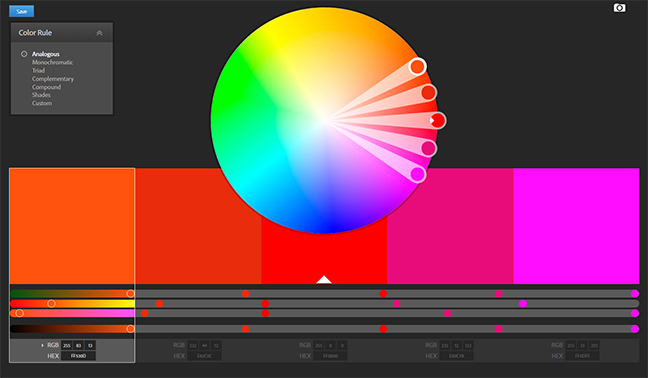 Now that we know all about color meanings and terminology is it time to start creating our own color schemes! To start us off let’s discuss some traditional color scheme patterns – monochrome, analogous, and complementary.
Now that we know all about color meanings and terminology is it time to start creating our own color schemes! To start us off let’s discuss some traditional color scheme patterns – monochrome, analogous, and complementary.
It is important to remember that the color wheel is your friend when creating color schemes and is a great tool to use. CreativeLive put together this great infographic (shown below) that illustrates the color wheel and the different palette types.
Let’s break a couple of these down.
Analogous
Analogous color schemes are the next easiest to create. Analogous schemes are created by using three colors that are next to each other on the color wheel.
Complementary
Complementary schemes are created by combining colors from opposite sides of the color wheel. In their most basic form, these schemes consist of only two colors, but can easily be expanded using tones, tints, and shades.
Monochrome
Monochrome isn’t listed on the infographic, but it is important to know. They are made up of different tones, shades, and tints within a specific hue. These are the simplest color schemes to create, as they’re all taken from the same hue. It is hard to make something ugly with this type of scheme (but not impossible, stay vigilant!).
Creating a color scheme
Now that we have gone over the different color schemes let’s start creating some of our own! You can jump into your favorite design software and get started or you can use some tools to help you. I’ve talked about my favorite color tool before – kuler. That was a long time ago and kuler is still around, but now Adobe calls it Color CC (spoiler – it is still awesome). The really nice thing about Color CC is that it hooks up directly with Photoshop or Illustrator and you can import and explore color schemes as you are designing – it is great. However, I would recommend you take some time and explore it on the actual website. On the site you can move around the color wheel and pick the different color schemes you want to try out – analogous, monochromatic, triad, etc.
Pretty cool right? Now with all your color knowledge you are well on your way to creating awesome color schemes for any project!
In case you missed it here are the other posts in the Color Theory series:
{image from here}



Leave a Reply